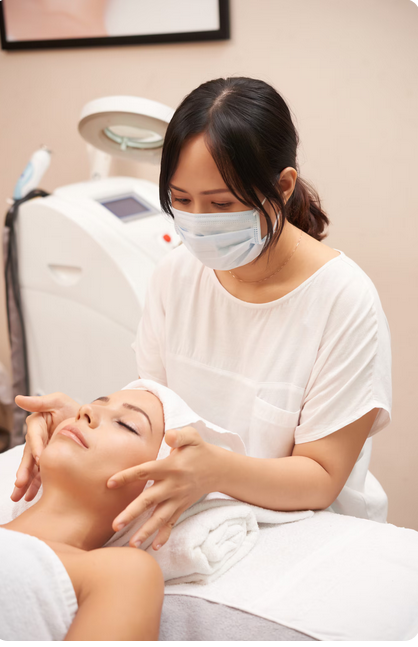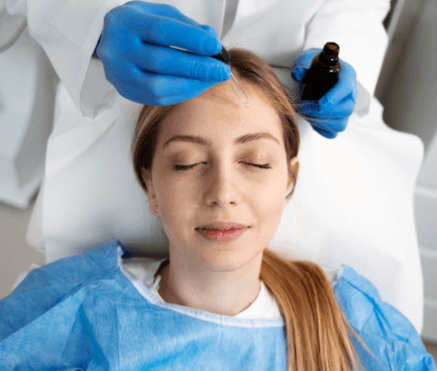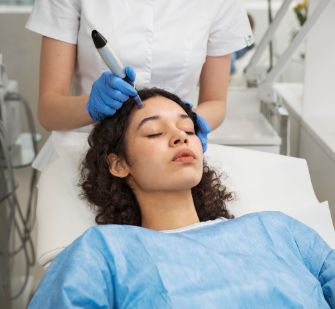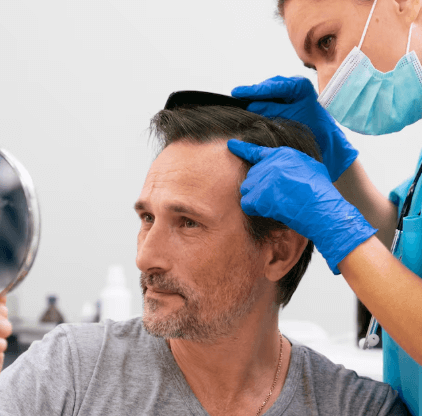Pico laser has become a highly sought-after treatment for pigmentation issues such as melasma, sunspots, and post-inflammatory hyperpigmentation (PIH). Its precise, ultra-fast energy pulses allow for targeted treatment with minimal disruption to surrounding skin. However, like any laser-based procedure, it can come with temporary side effects—most of which are mild and manageable.
This article explores the common side effects of Pico laser treatment for pigmentation, why they occur, and how to handle each one safely and effectively.
🔥 1. Redness (Erythema)
What it is: Mild to moderate redness in the treated area, similar to a mild sunburn.
How long it lasts: Typically 24–48 hours, though it can last longer with deeper treatments.
Why it happens: The laser energy triggers a healing response and slight inflammation as pigment is broken down.
✅ How to manage:
- Apply a cool compress for 10–15 minutes several times a day.
- Use a fragrance-free, calming moisturizer (e.g., aloe vera gel or products with centella asiatica).
- Avoid heat exposure, intense workouts, saunas, or hot showers for 48 hours.
- Sleep with your head elevated to reduce facial flushing.
😮💨 2. Swelling (Edema)
What it is: Puffiness or tightness around the treated areas, especially around sensitive zones like the eyes or cheeks.
How long it lasts: Usually subsides within 1–3 days.
Why it happens: Swelling is a normal immune response to the laser’s energy and pigment disruption.
✅ How to manage:
- Use cold packs (wrapped in a clean cloth) to soothe swelling.
- Take antihistamines if recommended by your provider.
- Stay hydrated and avoid salty foods, which can worsen swelling.
- Avoid lying flat—sleep with your head slightly elevated for the first night.
🟤 3. Darkening of Pigmented Spots (Microcrusting)
What it is: Treated spots may appear darker or scab slightly before flaking off. This is often described as a “peppering effect.”
How long it lasts: 3–7 days, depending on skin type and laser intensity.
Why it happens: Pigment is broken into tiny fragments that rise to the skin’s surface before naturally exfoliating off.
✅ How to manage:
- Do not pick or scratch the darkened areas.
- Let the microcrusts fall off naturally.
- Apply a gentle moisturizer to keep skin hydrated and support the healing process.
- Use broad-spectrum sunscreen SPF 50+ daily to prevent further pigmentation.
😬 4. Dryness or Flaking
What it is: Some patients experience dry patches or slight flaking in the treated area.
How long it lasts: 3–5 days, often concurrent with microcrusting.
Why it happens: The skin is undergoing renewal as damaged pigment rises and sheds.
✅ How to manage:
- Avoid harsh cleansers, retinoids, or exfoliants until skin returns to normal.
- Apply ceramide-rich or hyaluronic acid moisturizers 2–3 times daily.
- Use a humidifier if you’re in a dry climate or air-conditioned environment.
⚠️ 5. Itching or Mild Irritation
What it is: Some people report tingling or itching sensations as the skin heals.
How long it lasts: A few hours to a couple of days.
Why it happens: Itching is a sign of your skin’s healing and inflammatory response.
✅ How to manage:
- Apply a cool compress or gentle, unscented lotion.
- Avoid scratching or rubbing the skin.
- Consider over-the-counter hydrocortisone cream if itching becomes bothersome (consult your provider first).
🚫 6. Temporary Hyperpigmentation or Hypopigmentation (Less Common)
What it is:
- Hyperpigmentation: Skin becomes darker after treatment.
- Hypopigmentation: Skin becomes lighter in patches.
Why it happens: More likely in darker skin tones or when treated aggressively. It can also occur if sun exposure happens too soon after treatment.
✅ How to manage:
- Strict sun protection is critical: wear SPF 50+ daily, and avoid direct sunlight for at least 2 weeks post-treatment.
- Avoid using skin lighteners or exfoliants until your provider advises.
- If persistent, dermatologists may prescribe topical treatments like hydroquinone or azelaic acid to even out tone.
- In most cases, discoloration is temporary and resolves within a few weeks to months.
🚨 Rare But Serious Side Effects (Uncommon)
While rare, improper technique or treatment from inexperienced providers can result in:
- Blistering or burns
- Infection
- Permanent scarring or pigment loss
✅ Prevention Tips:
- Choose a qualified, board-certified dermatologist or laser specialist.
- Ensure the clinic uses FDA-approved Pico laser devices.
- Avoid unlicensed spas or overseas clinics offering deep discounts without verified credentials.
- Follow all pre- and post-treatment instructions carefully.
💡 Pro Tips for Smoother Recovery
| Do | Don’t |
|---|---|
| Use gentle cleansers and moisturizers | Pick or peel flaky skin |
| Apply sunscreen religiously | Expose skin to direct sun or heat |
| Follow your dermatologist’s aftercare plan | Use retinoids or acids too soon |
| Stay hydrated | Wear makeup within 24 hours (unless cleared) |
✅ Final Thoughts
Pico laser is a safe and effective treatment for pigmentation, but mild side effects like redness, swelling, and flaking are normal. By understanding what to expect and how to manage each symptom, you can support a smoother, faster recovery and maximize your results.
With the right care and a trusted provider, Pico laser can deliver clearer, more radiant skin—without the downtime and risks of traditional treatments.




